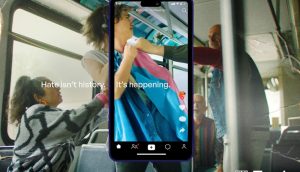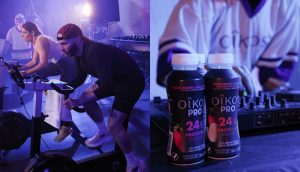The financial services sector continued to invest in DOOH this spring, according to a Q2 report from Adcentricity, making up almost 55% of all bookings for the Toronto-based network.
This is because the financial category (which includes banking, RRSPs and credit cards) is aiming to geo-target consumers according to branch locations, explains Rob Gorrie, CEO of Adcentricity. Another top category at Adcentricity is automotive, which made up 25% of the bookings in Q2, up from no bookings in Q1.
The boost in those categories indicates a recovering economic climate, Gorrie says.
‘Quite frankly, people are getting back to work. It’s as simple as that. They’re looking at it and going ‘it’s time to start spending again,” Gorrie tells MiC, about the automotive category. Other newbies in the medium include home decor, government and pharma, although they are all under 10% of the total bookings.
Adcentricity, a DOOH media aggregator, offers 200,000 screens in the US and Canada. After the popularity of a similar industry-review report in Q1, which the mediaco offered to clients and the public on their website, the decision was made to make it a quarterly affair, the company stated in the report’s opening remarks.
However, not all categories increased their spend – for instance, health care and confectionery clients did not contribute at all to Adcentricity’s Q2 profits, and telecommunications fell sharply from 45% to under 15%.
One of the current challenges facing the DOOH agency is uncertain booking cycles, which saw campaigns pushed back for months, the report states.
‘Even campaigns already booked and committed became delayed due to lack of creative and uncertainty around what the brand really wanted to do,’ it said, noting that this trend does not appear to be going away in the near future.
‘Q3 spending has been last minute and fairly erratic. Budgets and activity in non-traditional media appear and are executed in two- or four-week cycles and sometimes less.’
The most popular venues for client campaigns are convenience stores, shopping centres and doctor’s offices. The popularity of gas stations and restaurants fell in Q2.
Toronto is still the top market for Adcentricity, even though demand for the city dropped in Q2, as it did for other major urban centres like Edmonton, Calgary and Vancouver. Gorrie sees this as a seasonal trend, however he also points out that more clients are preferring to target smaller towns and rural areas.
‘You get a lot of people in the automotive and telecommunications space looking to reach people in Thunder Bay [for example], on a localized and targeted basis, so this makes absolute sense,’ he says.
Adcentricity does not disclose revenues for the company, but it has released the report as a market review.
This story has been updated on Aug. 12 at 1:45 p.m. to clarify Adcentricity’s digital media offerings.























